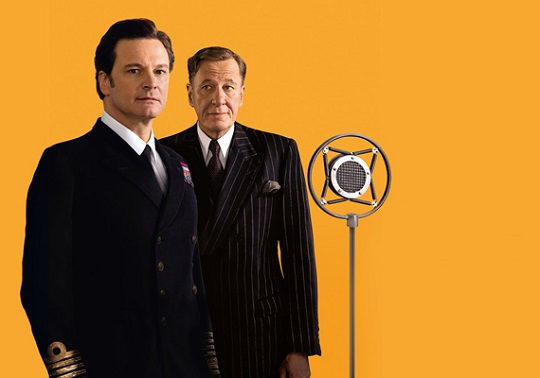
The movie ‘The King’s Speech’ has aid visualization of speech therapists’ labor exposing the real case of Lionel Logue, an Australian therapist who helped British King George VI to overcome his stutter problems and to get his self-stem back.
The King’s Speech, which got an Oscar for the Best Movie in 2010, giving prominence to the figure of the speech therapist as a language, speech and voice professional in charge of treating language problems people may suffer during their life.
The movie directed by Tom Hooper narrates a a story of personal triumph in a tumultuous era for Great Britain: abdication of King Edward VIII and the declaration of war to Germany in 1939. In this context lacking leadership, stutter became a source of concern for the aspirant of the British throne George VI. The voice is the main tool for a head of state to talk to the citizens and project the image of authority that goes along with the position.
Image source: http://i.telegraph.co.uk/
The King’s Speech tackles the patient-therapist relationship with the particularity that the person needing help was a country’s maximum leader. The trust in the professional and his methods was key for George VI to overcome his condition and to interact naturally with his social environment. Apart from the Monarch, interpreted by Colin Firth (Oscar for the Best Actor), the other great protagonist is Lionel Logue, the Australian speech therapist interpreted by Geoffrey Rush. Hereafter we highlight the most important achievements during his professional career:
Orators Club In the Australian city of Perth he made his first steps as a professional therapist. There, he taught classes on verbalization and on how to speak in public; also, he founded a club for orators.
First World War. After travelling around half of the world studying the methods of orators, Logue came back to Perth to treat veterans from the Great War who had suffered some kind of fatigue in their voice during the conflict.
Moving to Great Britain In the mid-20s, Logue moved with his family to London, where he took jobs in teaching speech for several schools and, in 1926, opened his own consult at 146 Harley Street. Thanks to this clinic, he met his most prestigious client, George VI. In 1935, he was co-founder of the British Society of Speech Therapists and became founding member of the Speech Therapists Association in 1944. The relationship patient-therapist became so close that George VI recognised the great task developed by the speech therapist and named him member of the Royal Victorian Order.
Trust in the professional and his methods were the keys for George VI to overcome his condition.
A very common condition
But, what did the monarch really suffer from? Dysphemia, commonly known as stuttering. The CIE-10 (International Classification of Mental Disorders and OMS Behaviour) defines dysphemia as follows: “speech condition which includes frequent repetition or prolongation of sounds, syllables or words due to constant doubts or pauses which interrupt the rhythmic flow of speech”.
George VI’s dysphemia was brought to light during the closing speech of British Empire’s Exhibition at Wembley on 31 October 1925. This bad experience led him to a professional, Logue, who after diagnosing a lack of coordination between the larynx and the diaphragm, prescribed vocal exercises for the Monarch to relax while speaking and, hence, avoid the tension causing muscle spasms.
Hereafter you can watch a video in which TVE highlights speech therapists’ task on behalf of the launching of The King’s Speech in 2010. In this case, the cinema has served to visualize a work which, in many occasions, does not transcend to the rest of society due to their lack of knowledge. Using the words of Ignacio Rivas, head of the Senda Cabinet of home visiting speech therapy in Madrid: “[The King’s Speech] has popularised the work of a speech therapist, so many can now see it as a practical example of the uses of therapy”.








